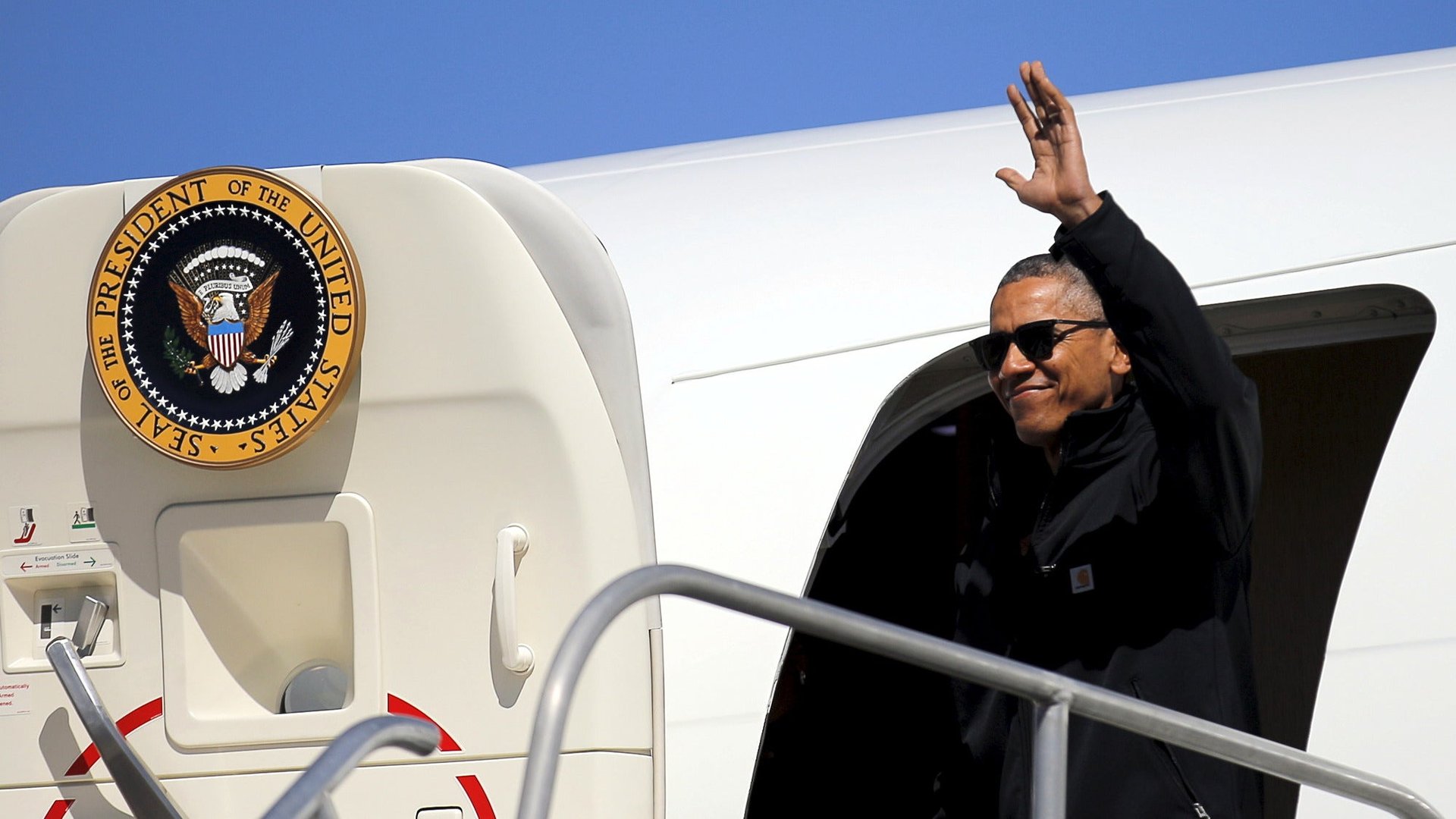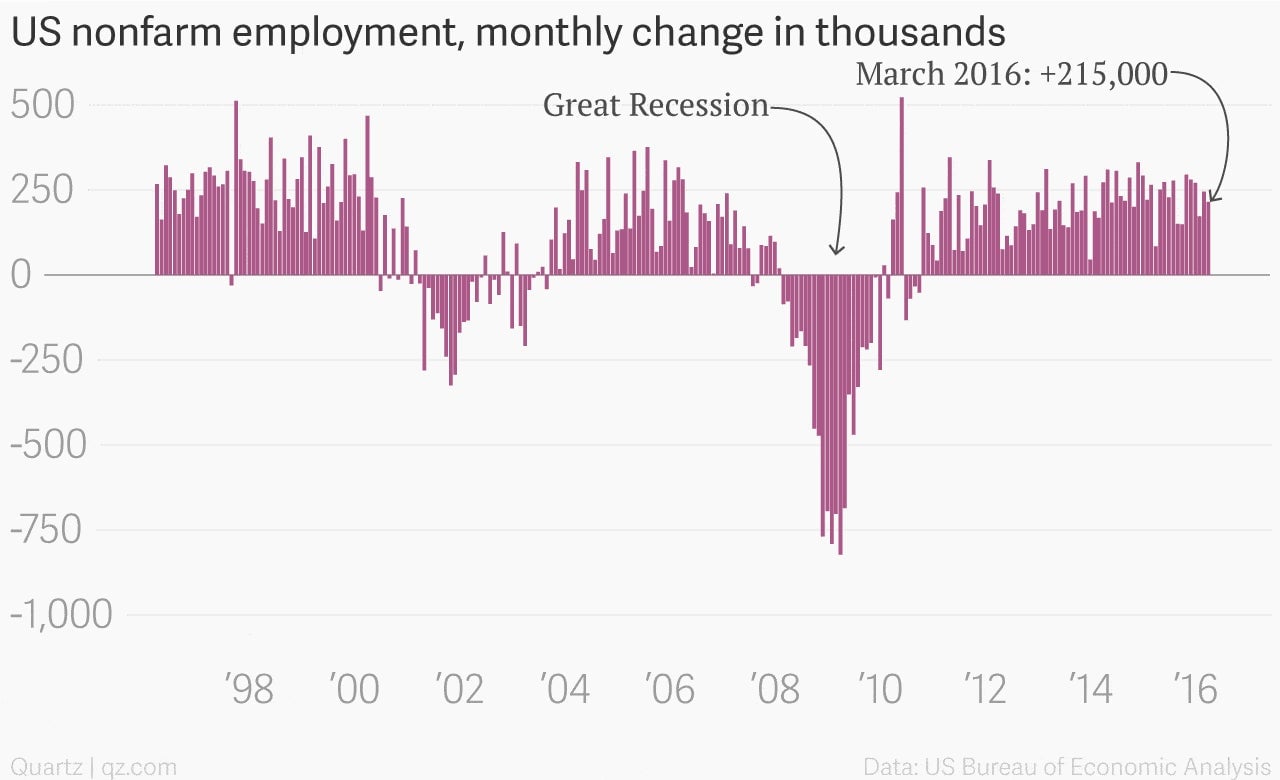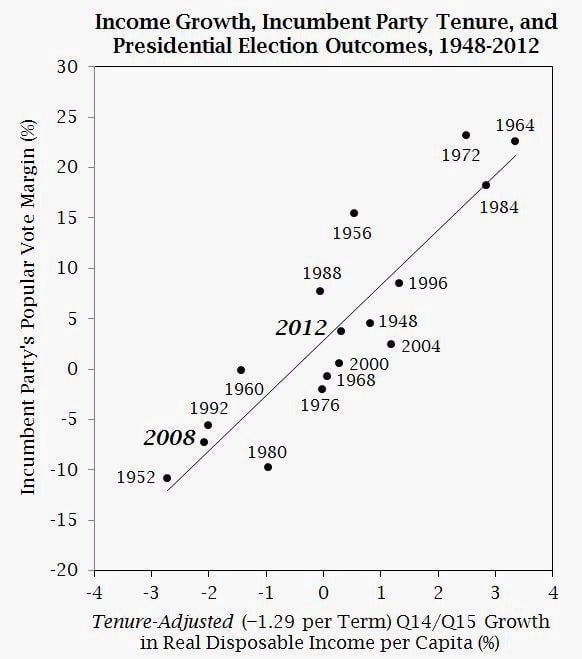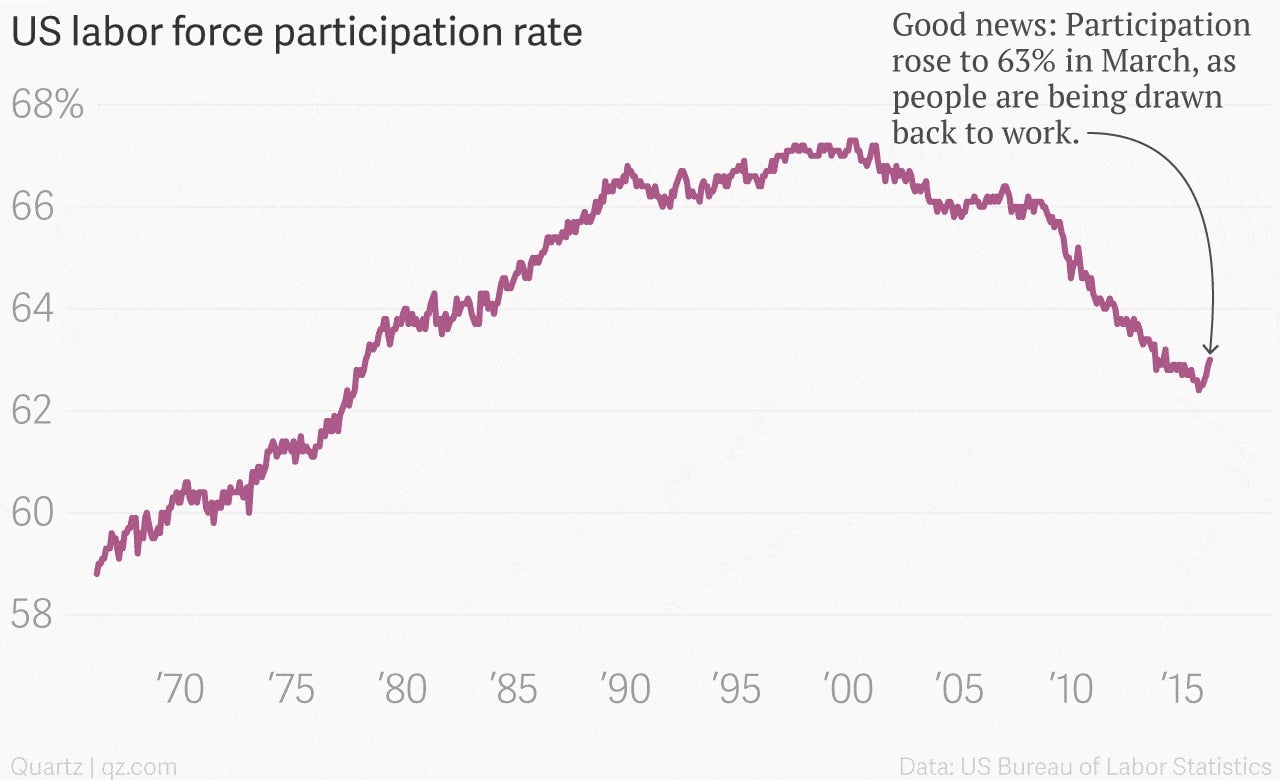The Republican party’s biggest problem isn’t Trump—it’s the Obama economy
Today’s strong jobs report is another reminder that even if Donald Trump wasn’t exposing the fractures in its electoral coalition, the Republican party would still face a daunting challenge in November.


Today’s strong jobs report is another reminder that even if Donald Trump wasn’t exposing the fractures in its electoral coalition, the Republican party would still face a daunting challenge in November.
While candidates and their messages dominate political coverage, it’s the strength of the economy—and particularly, how it affects people’s income—that is the best predictor of election results. Put simply, when people are deciding between change and more of the same, their wallet is their guide.

The Princeton political scientist Larry Bartels made the following chart in 2013, shortly after President Obama’s re-election, to illustrate that the ruling party’s victory or defeat matches up quite closely to the change in per capita disposable income over the two previous quarters.
The dots plot the incumbent party’s actual victory or loss in an election year; the line shows what Bartel’s model estimates the margin of victory or defeat would be.

Obama’s 3.8% victory margin was decently close to the 4.6% in Bartels’ model, based on the data he had at the time. (Revised income data gets the model to a 4.1% victory margin, even closer!)
Without a more robust economy, Bartel argued that the Republican candidate would naturally have an advantage in 2016—especially since “incumbent fatigue” gets stronger with time.
Let’s check the numbers now:
You’ll note that disposable income growth in the second and third quarter of 2012 was not actually that great—it even went negative in the months before the election. But for the last two years, we have seen a pretty steady quarterly increase.
Bartels stresses his formula isn’t for forecasting—and we won’t know the actual figures about income change until after the election—but as a mental exercise, the formula suggests an election held about now would see a one percentage point expected margin of victory for the Democrats.
That’s about the same advantage vice president Al Gore held while running to replace president Bill Clinton in 2000; he won the popular vote by .5 percent but lost the election due the vagaries of the electoral college and an intervention by the Supreme Court. (Anyone excited to replay that scenario with an eight-person court?)
Of course, the election isn’t today—can we expect current economic trends to continue for the next eight months? Despite a shaky first quarter in the markets, economic forecasters are still predicting slow-but-steady growth to continue in the US. While things can change quickly, it suggests that we can expect disposable income to continue to increase.
And one good sign came in this week’s jobs report. Besides the top-line number showing increasing employment, the percentage of Americans in the workforce jumped for the first time in a while. That’s a sign that a tightening labor market is leading to higher wages, bringing people back to employment who had previously been discouraged by the lack of opportunity:

Overall, average raises have grown 2.3% in the last year. If that continues, it could provide a significant but by no means comfortable tailwind for the Democratic nominee. All the more reason for Republicans to nominate their strongest possible candidate—or, you know, Donald Trump.